site search
online catalog
MODEL 1839 CARTRIDGE BOX WITH ORIGINAL BOX PLATE: MISSISSIPPI RIFLE
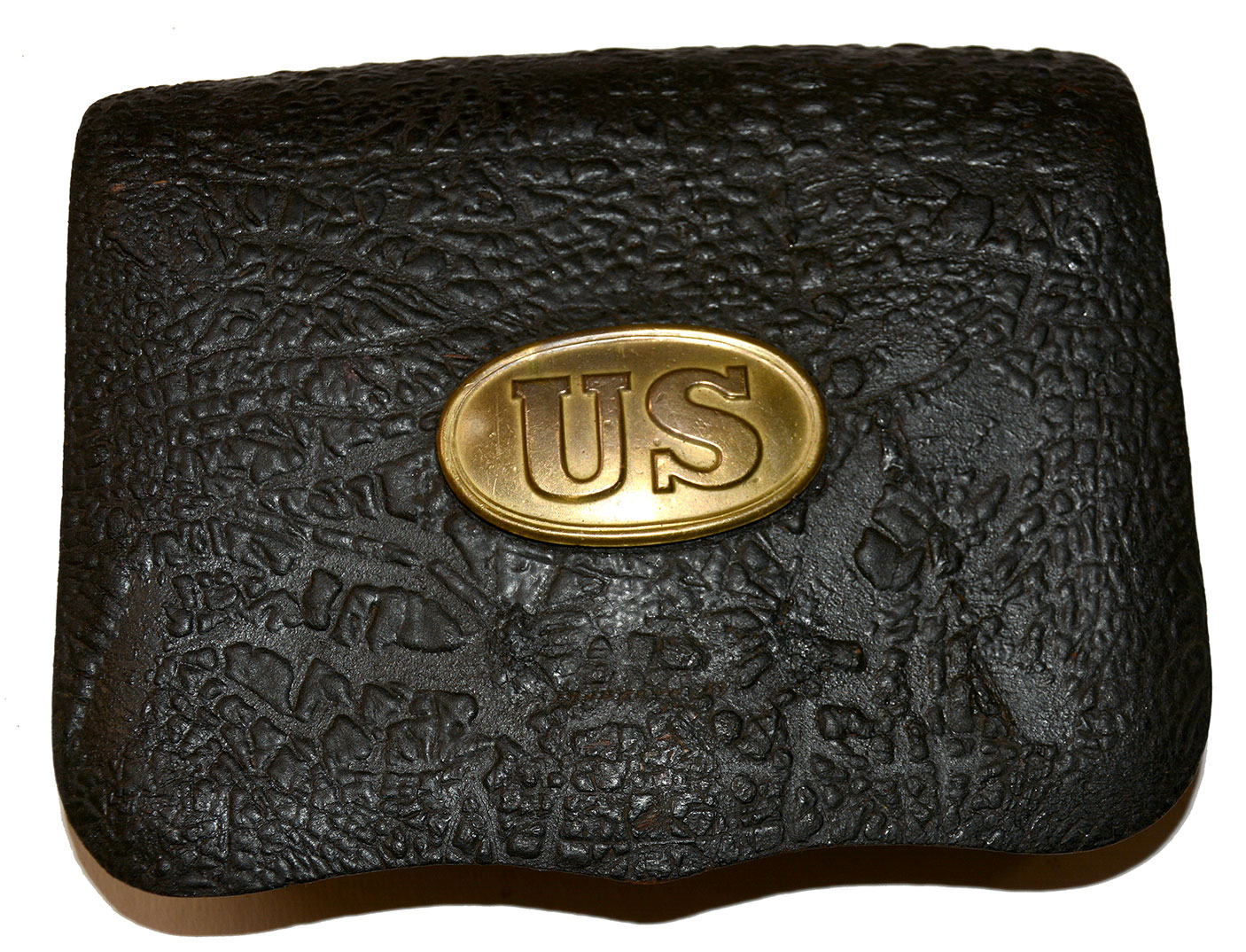
Hover to zoom

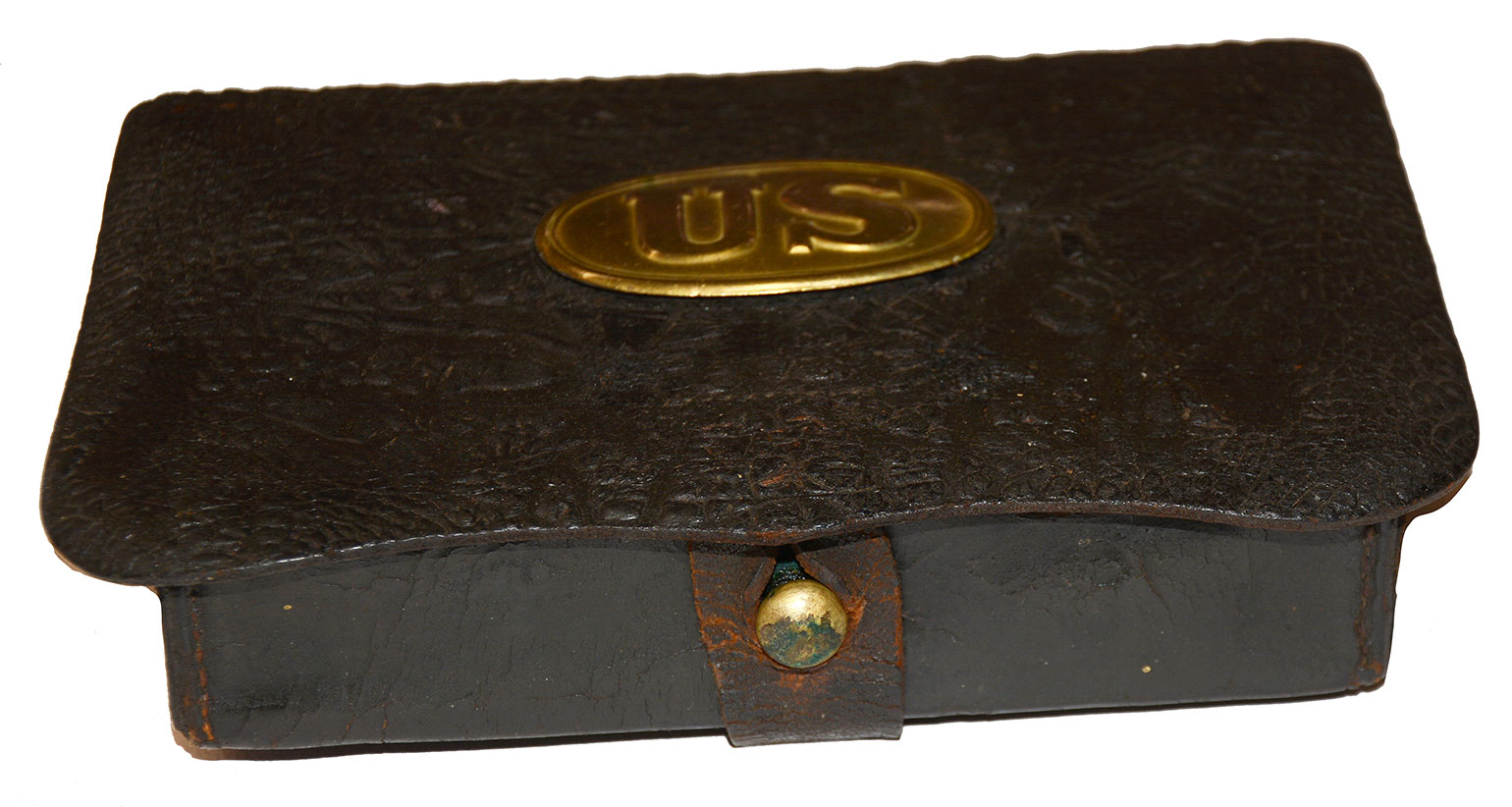
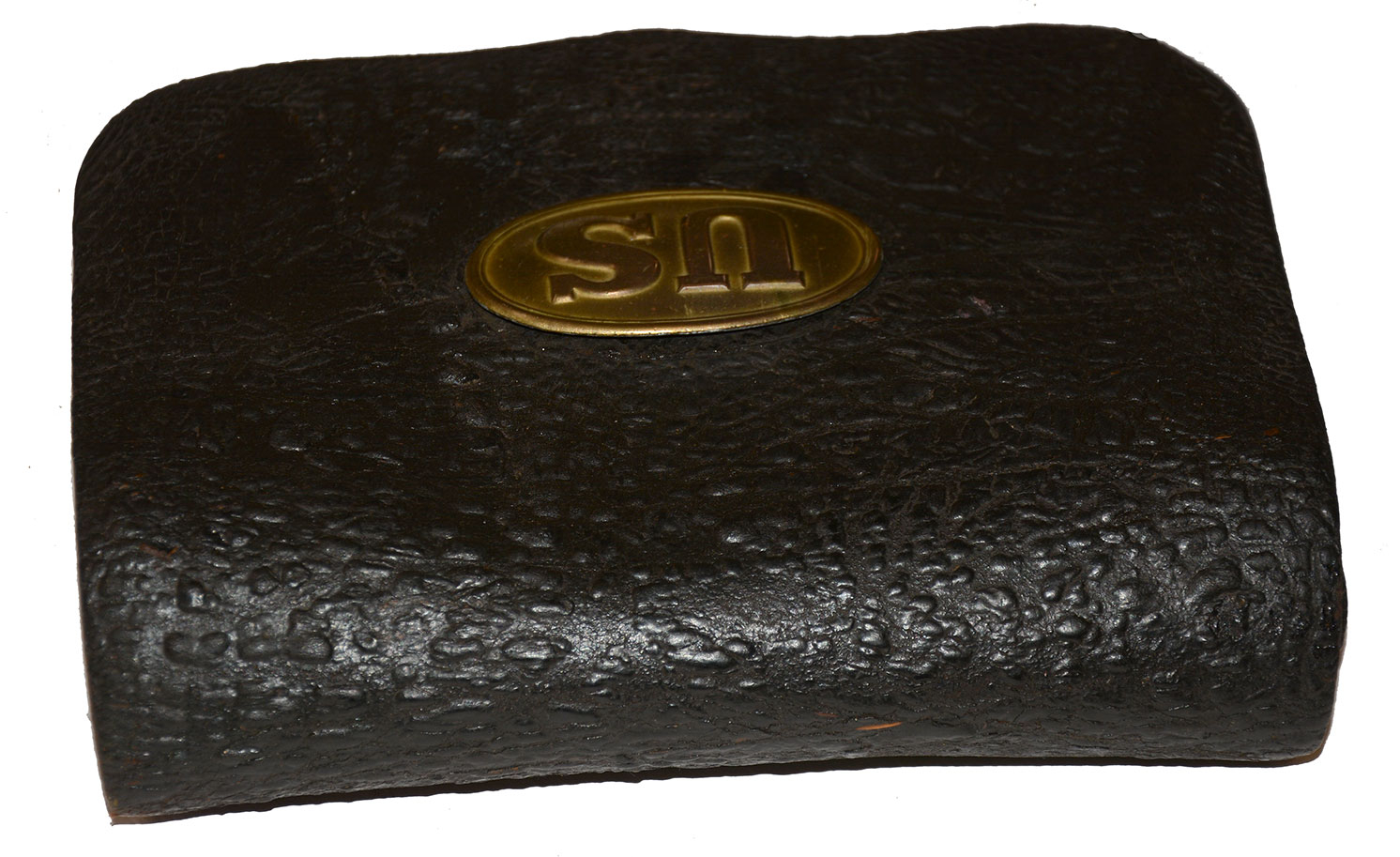
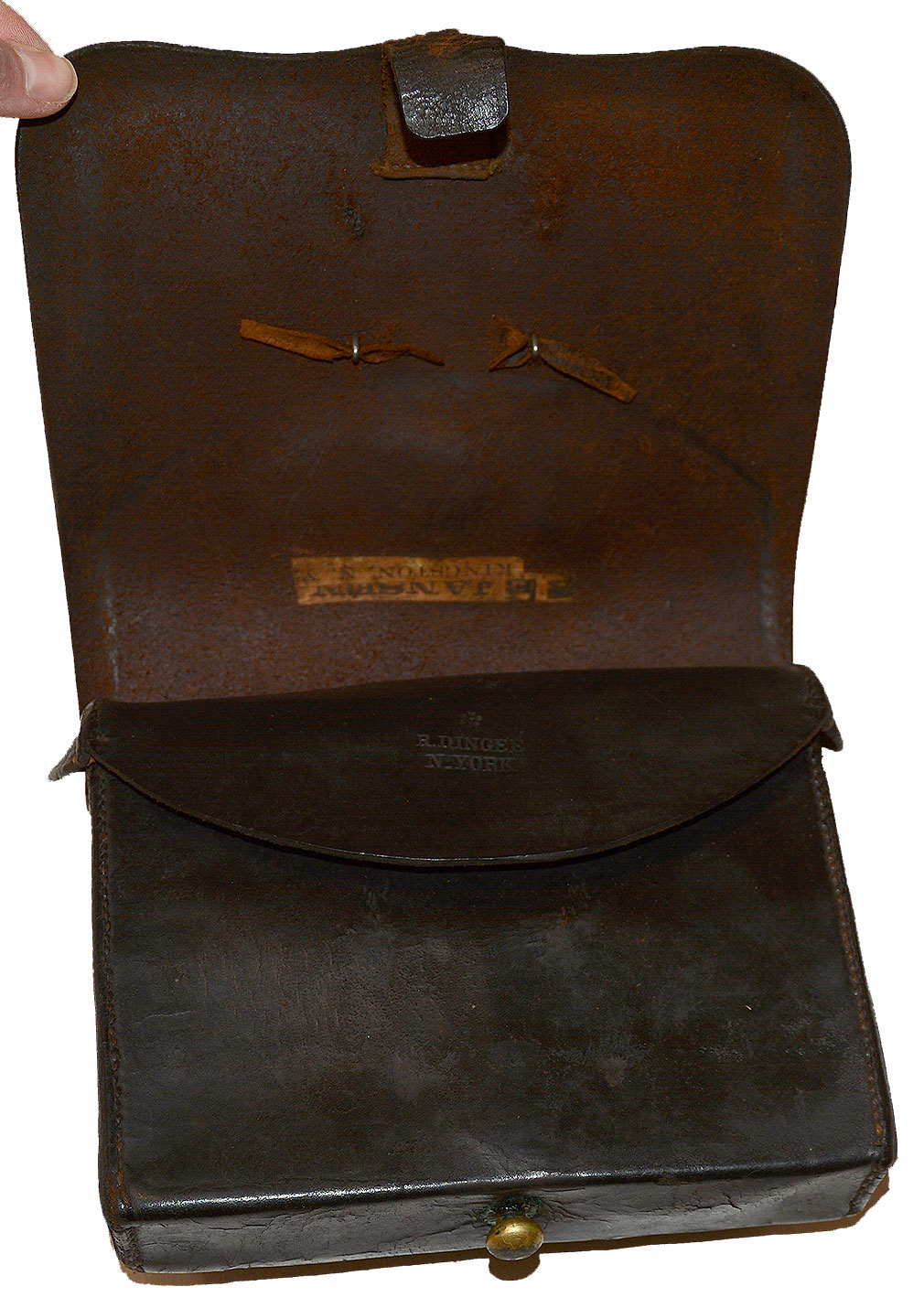
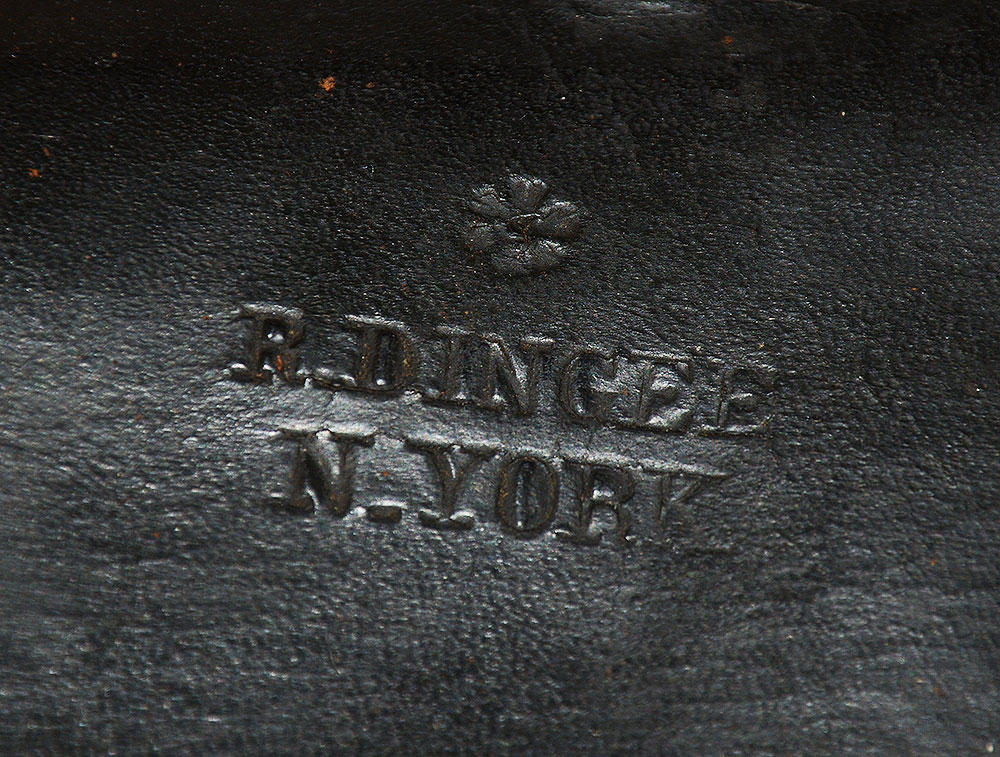
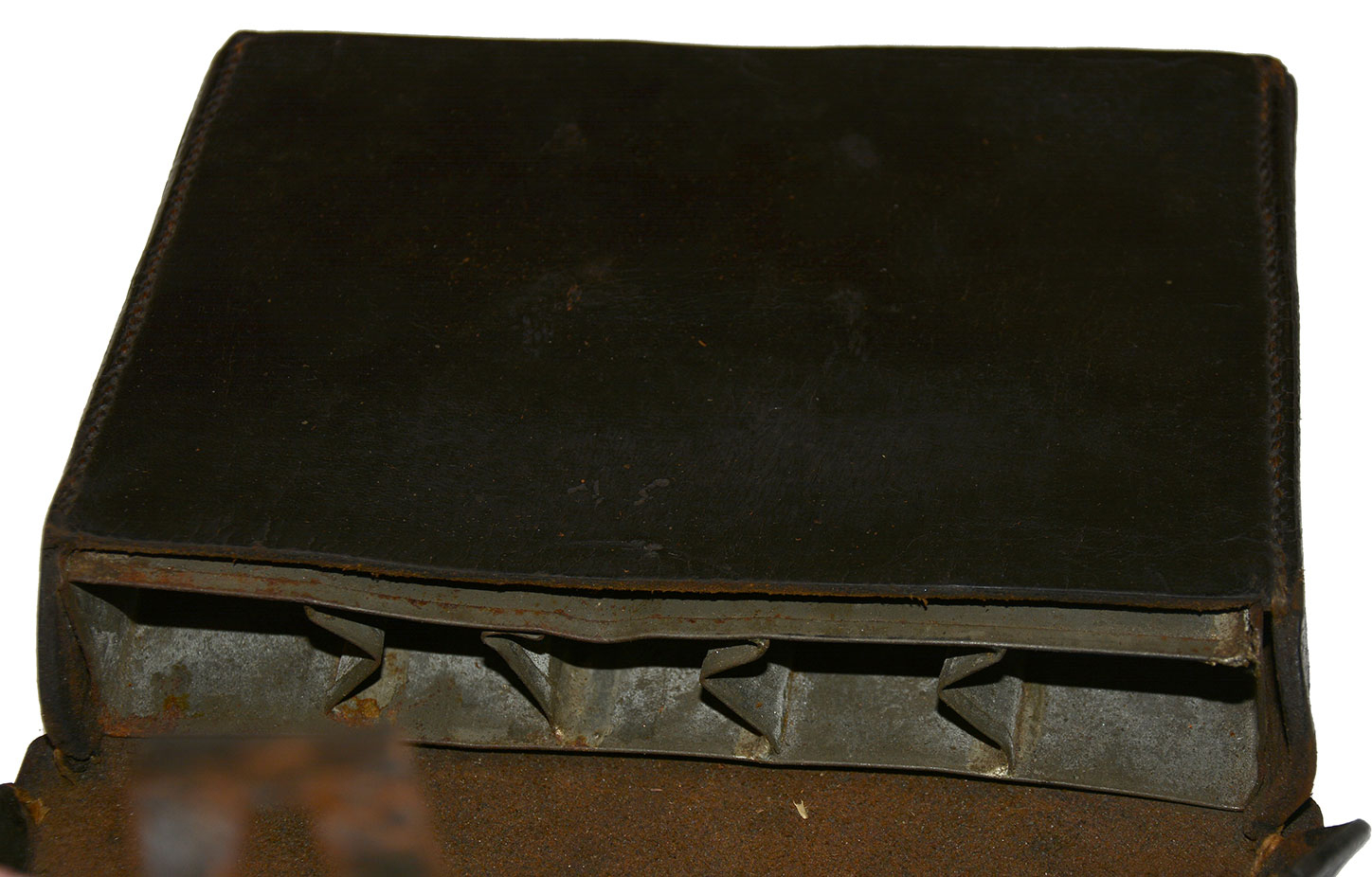
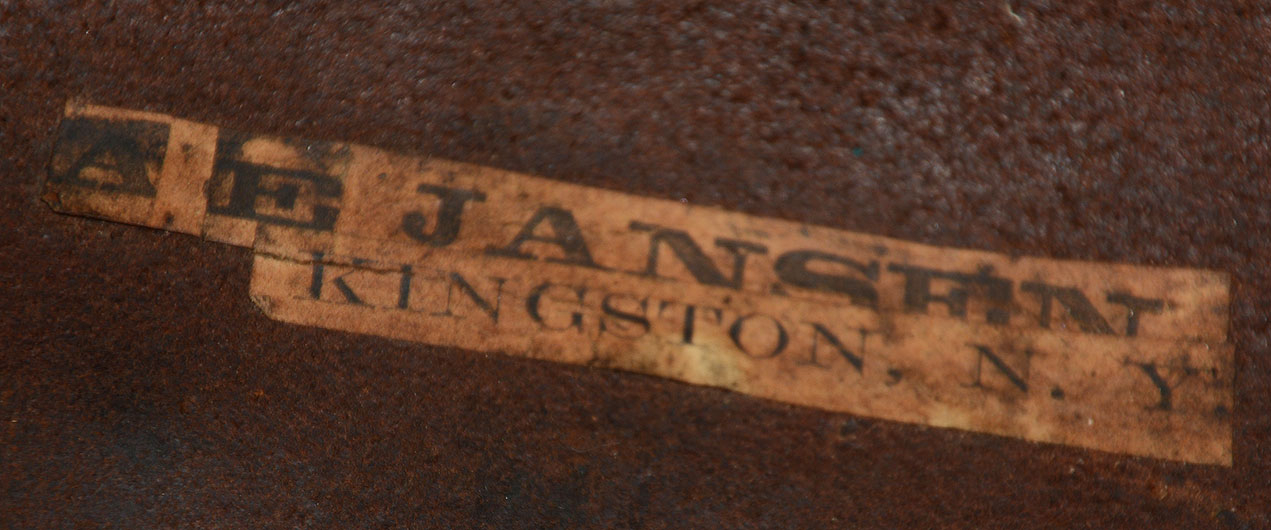
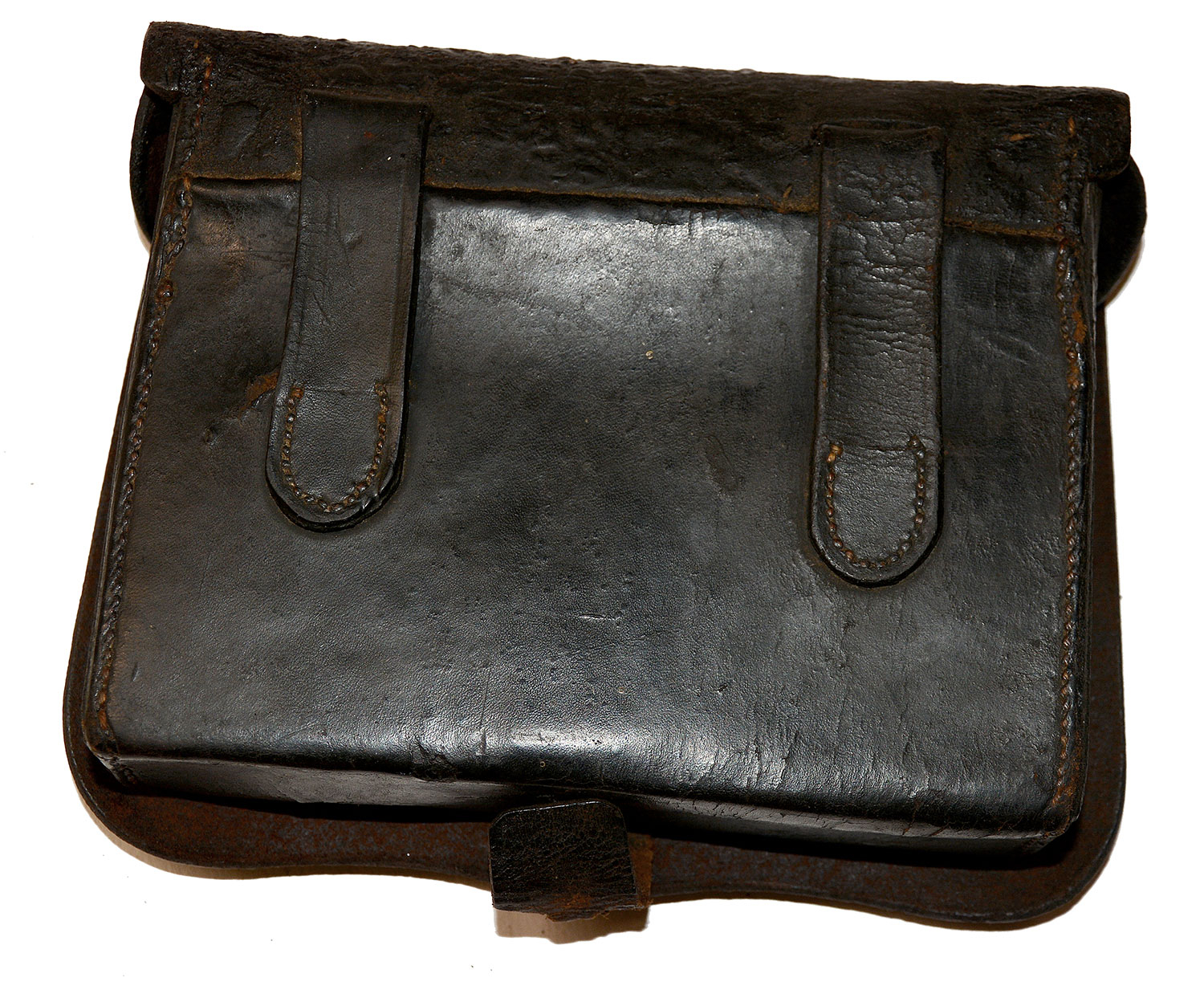
$1,295.00 SOLD
Quantity Available: None
Item Code: 1142-117
These cartridge boxes were adopted in 1839 and use a single-piece tin liner divided into five compartments in an upper tray for twenty cartridges ready for use, and two open lower sections for two additional packs of ten cartridges each in reserve. The box was designed to be worn on the waist belt only and is provided with two vertical belt loops on the reverse, both attached by stitching and no rivets, as is also a latch tab, sewn to the inside lower front of the box, that fastens over a brass finial. The loops, latch tab, and tin are in place, as is the small 1839 pattern cartridge box plate specified for us with this box.
These boxes were initially used for the Hall carbine, which carried its own implements and did not need a pouch for them mounted on the cartridge box. This design was modified in 1841 by the addition of an implement pouch so that it could be carried with other weapons, but the patch box of the M1841 “Mississippi” sufficed for its tools and R.T. Huntington notes that Maj. R.L. Baker’s personal copy of the 1841 Ordnance Manual at West Point is annotated to note that the pattern without the implement pouch is for both the Carbine “& Rifle.”
The box is very crisply stamped on the inner flap, “R. DINGEE / N. YORK.” A saddler in New York City, Robert Dingee took his first contracts for military gear in 1808 and under his leadership and that of his sons, Robert Jr. and Henry A., the firm became the foremost supplier of US military accoutrements in the first half of the 19th century.
The condition of the box is very good, but at some point a weight on top of it squeezed the magazine tin, bending the dividers in the upper tray. We have not tried to take the tin out or unbend the dividers, and is not noticeable from the outside. The exterior of the cover shows pebbling to the finish. This is often the result of a varnish or paint applied during the period to militia gear that initially imitated a robust polish. Again, we have left this untouched. Supporting the notion that this may have been issued to a state rifle company is a printed paper label on the inside of the flap reading “A.E. JENSEN / KINGSTON, N.Y.” This is probably Andrew E. Jansen, picked up in the 1860 census as a 31 year-old druggist in Kingston with wife and three children. We do not find him in the New York Civil War rosters, but he was very possibly a member of the NY State Militia, prewar or wartime, which like the forces of other states included companies of riflemen and light infantry.
This would make a nice addition to a display of M1841 rifles or one showing the evolution and changing design of accoutrements. [sr] [ph:L]
~~~~~~~~~~~~~~~~~~~~~~~~~~~~~~~~~~~
THIS ITEM, AS WITH ALL OTHER ITEMS AVAILABLE ON OUR WEB SITE,
MAY BE PURCHASED THROUGH OUR LAYAWAY PROGRAM.
CLICK HERE FOR OUR POLICIES AND TERMS.
THANK YOU!
Inquire About MODEL 1839 CARTRIDGE BOX WITH ORIGINAL BOX PLATE: MISSISSIPPI RIFLE
Most Popular
Historical Firearms Stolen From The National Civil War Museum In Harrisburg, Pa »
Theft From Gravesite Of Gen. John Reynolds »
Selection Of Unframed Prints By Don Troiani »
Fine Condition Brass Infantry Bugle Insignia »
British Imported, Confederate Used Bayonet »
Scarce New Model 1865 Sharps Still In Percussion Near Factory New »
featured item
VERY RARE US MODEL 1840 AMES CAVALRY OFFICER’S SWORD WITH QUILLBACK SOLINGEN BLADE
Very rare Ames with gold washed, quillback, Damascus blade from Solingen. Manufactured: Springfield, MA / Solingen Maker: N.P.Ames Year: C1840s Model: M1840 Size: 33 5/8 inch blade length, 1.18 wide Condition: Excellent+ This is obviously a product… (870-238). Learn More »


